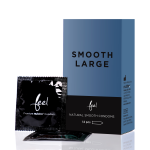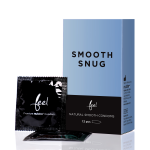When it comes to safe sex, choosing the right condom is crucial for ensuring both protection and comfort. Condoms are one of the most effective ways to prevent unplanned pregnancies and protect against sexually transmitted infections (STIs). However, not all condoms are created equally. With so many options available, how do you know which one is the safest and best for you?
In this blog, we’ll guide you through the key factors to consider when selecting the safest condoms, helping you make an informed decision that fits your needs.
1. Choose the Right Material
Condoms come in a variety of materials, each with its own benefits. The safest condom for you depends on your specific needs, such as allergies or sensitivity.
- Latex Condoms: These are the most common type of condoms and are highly effective in preventing both STIs and pregnancies. They are strong, flexible, and provide a snug fit. However, some people may have allergies to latex, in which case alternative materials should be considered.
- Non-Latex Condoms: If you’re allergic to latex, you can opt for non-latex options such as polyurethane or polyisoprene condoms. Polyurethane condoms are thinner and offer better heat transmission, but they may be less flexible. Polyisoprene condoms, on the other hand, are stretchy like latex but are made from synthetic rubber, making them a great alternative for those with latex allergies.
Click here to read more about the key differences between latex condoms and non-latex condoms.
- Natural Lambskin Condoms: These condoms are made from lamb intestine and offer a more natural feel, but they only protect against pregnancy, not STIs. If STI protection is a priority, these may not be the safest option.
2. Check for Certification and Quality Standards
To ensure that the condom you’re using is safe, always check for certifications. Certified condoms have been rigorously tested for strength, durability, and reliability.
- ISO Certification: Look for condoms that comply with the International Organization for Standardization (ISO) standards. These condoms have undergone strict testing procedures to ensure they meet safety and quality requirements.
- FDA Approval: In the US, the Food and Drug Administration (FDA) ensures that condoms meet certain standards for effectiveness. Condoms with FDA approval have passed stringent testing.
At Nulatex, we ensure our condoms meet international safety standards, giving you peace of mind with every use.
3. Consider the Size and Fit
One of the most important factors in choosing the safest condom is ensuring that it fits properly. Condoms that are too tight can break, while those that are too loose can slip off, reducing their effectiveness.
- Standard Size: Most condoms come in a standard size that fits a wide range of users. However, if you find that standard condoms are uncomfortable, there are other options available.
- Large or Small Condoms: Some brands offer condoms in different sizes, such as large or snug fit condoms. Make sure to choose a size that feels comfortable and stays securely in place.

Shop our large condoms: Nulatex Feel Smooth Large.

Shop our small condoms: Nulatex Feel Smooth Snug.
Click here for a guide to condom sizes and finding the perfect fit.
- Try Different Brands: Different brands offer different fits and materials, so don’t be afraid to experiment with various options until you find the one that suits you best.
4. Lubrication for Added Safety
Lubrication is key to preventing condom breakage. Many condoms come pre-lubricated to reduce friction, but it’s essential to know which types of lubricants are safe to use.
- Water-Based or Silicone-Based Lubricants: These lubricants are safe to use with all types of condoms, including latex. They reduce friction and increase comfort during use, making the condom less likely to tear.
- Oil-Based Lubricants: Avoid using oil-based products like lotions, petroleum jelly, or coconut oil with latex condoms, as they can weaken the material and cause it to break. If you prefer an oil-based lubricant, use it with non-latex condoms like polyurethane.
5. Store Your Condoms Correctly
Even the best condom won’t provide proper protection if it’s stored incorrectly. Exposure to heat and light can weaken the material, increasing the risk of breakage. To keep your condoms in good condition, store them in a cool, dry place like a drawer or cabinet, avoiding warm areas such as wallets or car glove boxes. Always check the expiration date before use, as condoms can become less effective after they expire.
Conclusion
Choosing the safest condom for your needs involves considering factors such as material, size, lubrication, and safety certifications. By understanding what to look for, you can select a condom that provides maximum protection while ensuring comfort and pleasure. Remember, the safest condom is one that fits properly, is made from reliable materials, and meets international safety standards.
At Nulatex, we take pride in producing high-quality latex condoms that meet strict safety regulations. Our products are designed for both protection and pleasure, so you can feel confident during every intimate moment. Contact us today to learn more about our range of condoms and how we prioritize your safety and satisfaction.





